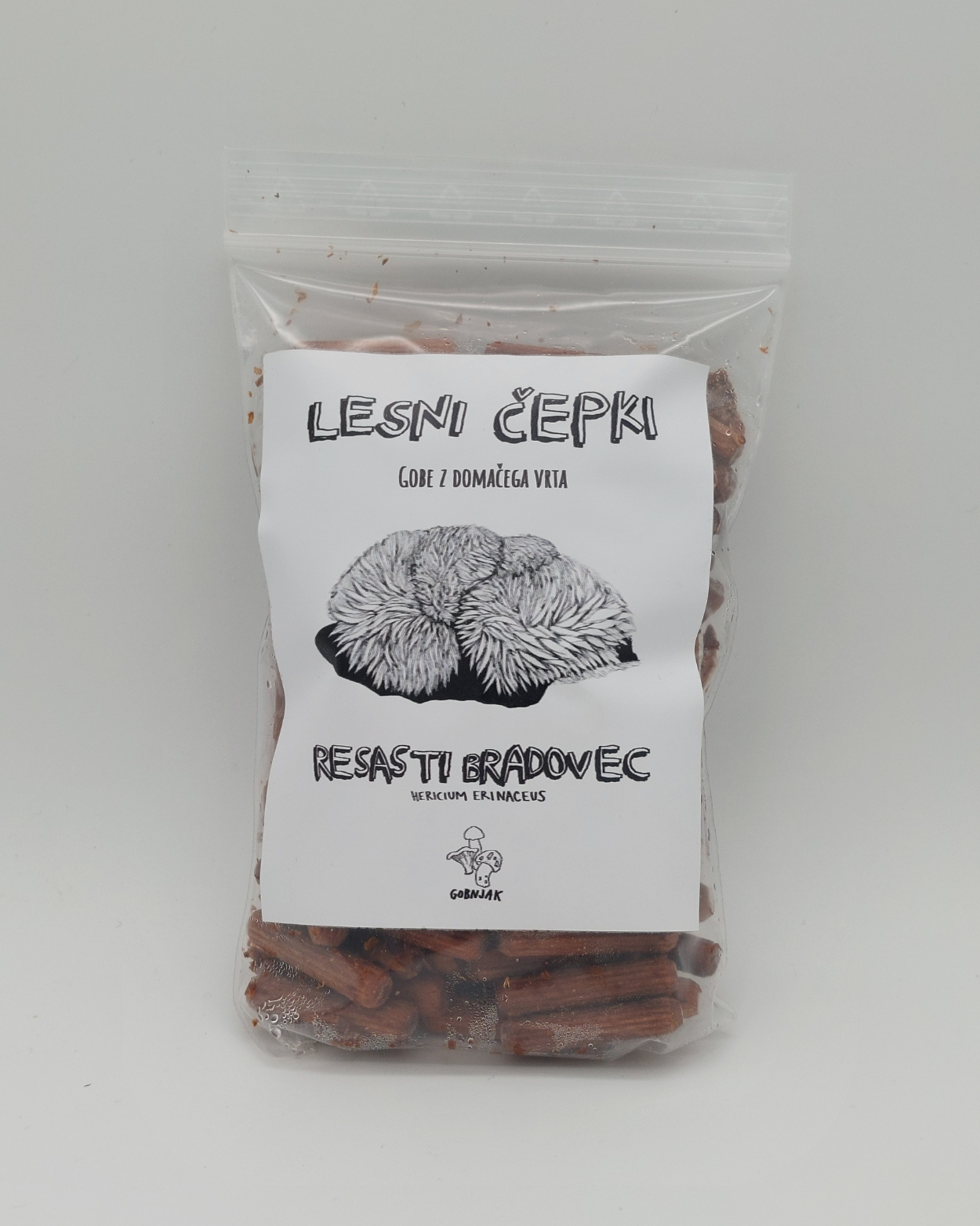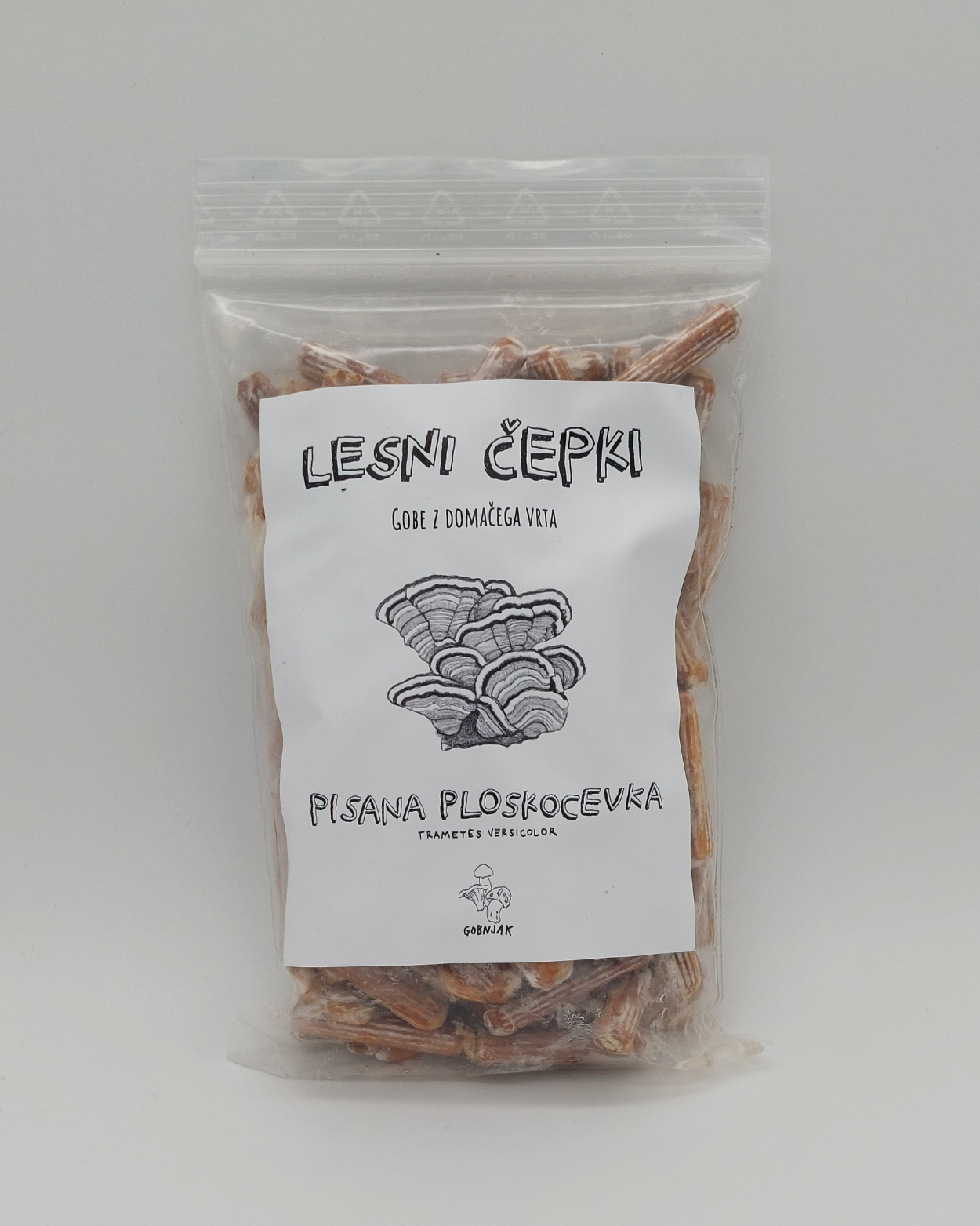
Growing mushrooms on logs
In nature, many types of fungi grow on the wood of trees, many of which are edible. When growing mushrooms on logs, our goal is to provide the fungi with the best possible conditions for the growth of mycelium and then mushrooms.
Cultivation on hardwood logs was started several centuries ago by the Chinese, who grew shiitake on oak trees. Oak logs were placed under the trees on which shiitake trees grew, so that they became infected with their spores. In the West, we only learned about this technique in the middle of the 20th century and adapted it; logs are no longer inoculated with spores, but with mycelium on various substrates, most often with overgrown wooden plugs or sawdust.

What types of mushrooms are grown on logs?
Many different types of edible and medicinal mushrooms can be grown on logs, but shiitake, beech oyster mushrooms and ganoderma lucidum (lat. Ganoderma lucidum ) are most commonly grown. In addition to these, we can also grow fringed warthog, poplars, namekko mushrooms, colorful flat-eared mushrooms and many others. In principle, all types of mushrooms that also grow on wood in nature could be grown in this way.

Nameko mushrooms (lat. Pholiota microspora) grow from a beech log.
Preparation of logs
What kind of logs are suitable?
The most suitable wood for growing mushrooms is hardwood logs, which must stand for at least two weeks, but no more than two months, after felling . If the wood is less than two weeks old, the wood is still too "alive" and can start to fight the fungus, but if it is older than two months, random fungi from nature start to settle in the wood, which will represent competition to our fungi. It is important that the wood is healthy, has undamaged bark and no other fungi grow on it . For this reason, the wood of trees that have dried up due to fungal infections is not suitable.
The size of the logs is not important to the fungus, but it is important to us. Logs are usually cut to a length of about one meter, and the most suitable thickness is between 15 and 30 centimeters . When sawing the logs, keep in mind that you will have to move them, so they should not be too heavy.
It is also important that the bark sticks to the logs . Some mushrooms, such as shiitake mushrooms, form mushroom buds (primordia) between wood and bark. If the bark is not on the log, the mushrooms cannot grow.
What types of trees are best?
Most of the mushrooms grown on logs grow in nature on hardwoods. Among them, the most useful wood is beech, alder and hornbeam , and in addition to these, we can also use wood of maple, birch, linden, willow, poplar or ash. Wood with a lot of tannin, such as oak, is only suitable for certain species, such as shiitake or fringed beard. Oak wood is the best choice for growing shiitake, while beech oyster will not grow on oak wood. The wood of conifers, fruit trees and acacia is unsuitable.
- Shiitake : oak, beech, alder, maple. They prefer harder wood.
- Beech and summer oyster : beech, alder, hornbeam and softer types of wood such as willow and poplar
- Fringed beard : oak, beech, hornbeam, maple. They prefer harder wood.
- Shiny semi-gloss : oak, beech, hornbeam, maple, alder, willow, poplar. It is a rather indiscriminate species.

Beech is one of the most suitable species for growing mushrooms.
Grafting logs
Inserting plugs
Fungal mycelium can be inserted into logs in different ways, but the most practical is the method using wooden plugs. Use a drill to drill 4-5 cm deep holes in the logs at a distance of about 15 cm. Such a distance is used both between rows of holes as well as between individual holes in a row. Insert the plugs into the hole so that their top is at the level of the bark. In doing so, make sure that you touch the plugs as little as possible. After the plugs are inserted into the holes, they are smeared with wax. This will protect the mycelium on the plugs from drying out and various insects that would feed on the mycelium. Beeswax or vegetable wax is most suitable.

After drilling the holes, insert the plugs and smear them with wax.
MOISTURE is key when storing logs!
When the mycelium of fungi grows over wood in logs, it is crucial that it has suitable conditions, the most important of which is moisture . If the log dries out too much in the first year, we can say goodbye to the mushroom crop . We recommend two ways of storing logs.
-
Storing logs outside
For the logs, we find a shady and moist corner, where we place them on the ground so that they have contact with the ground. Cover the logs with a thick layer of straw to prevent them from drying out and overheating. We turn the straw regularly and make sure that it does not dry out. Watering is key during the hot and dry summer months. Store logs outside if grafted between February and August.
-
Indoor storage
If the logs were inoculated with fungi in autumn, they should be stored in a cooler place, such as cellars or garages, over the winter. The logs are placed in large garbage bags and almost closed. A 5-10 cm opening for ventilation should remain at the top of the bag. Once a month, pour one to two deciliters of water into the bag of logs to ensure sufficient moisture. This allows the fungus to grow in the wood, even when outside temperatures are below freezing. The cold does not harm the fungi, but the mycelium will stop growing at low temperatures. The technique using garbage bags has proven to be the most effective for us.
What can go wrong?
According to our experience, the most common mistake is that the logs dry out in the first year of growth . This stops mycelial growth before the wood is fully overgrown. Even if you want to re-moisten the log, it will not help the mycelium. In the best case, we will have a smaller crop of mushrooms, but in the worst case, we will not grow mushrooms at all. Therefore, we would like to emphasize once again that the key is to provide moisture and protect the logs from drying out, either with straw mulch or the use of garbage bags.
Another common mistake is the quality of the logs. These must be made from healthy wood that has been left to stand for at least two weeks and no more than two months. Trees that are drying or are sick are not suitable because they are most likely already infected with other fungi. When the mycelium of a fungus infects wood, it will make it impossible for any other fungus to grow there.
Of the wild animals, snails, which eat our mushrooms, do us the most damage . If they are eaten when they are still small, they can destroy our entire mushroom crop. Snails can be avoided by moving the logs to a safer location and standing them upright when mushrooms are expected.
When and how much mushroom harvest can we expect?
In general, it takes a year to a year and a half for the mycelium of the fungus to outgrow the entire log. If we use hard wood, such as oak or beech, the regrowth will take longer, but if we use soft wood, such as e.g. linden or willow, but mushrooms can grow after half a year of growth. The hardness of the wood also affects how long the logs will last before falling apart. We will pick mushrooms from logs of softer wood for around 3 years, while we will pick mushrooms from logs of harder wood from 4 to 5 years.

Several kilograms of mushrooms will grow from one log. When we first started growing on logs in Gobnjak, 13 kg of beech oysters sprouted from three beech logs in the first autumn.

Cracked "flower" shiitake trees, which sometimes grow from logs, are especially prized in Asia.
What about growing on stumps?
Wood plugs with mycelia can also be grafted onto the stumps of the aforementioned types of trees. Simply attach the plugs to the stump in the same way as the logs and coat them with wax. Growing mycelium and waiting for the first mushrooms sometimes takes up to two years, but once they start growing, mushrooms can be harvested from stumps for up to 10 years.













